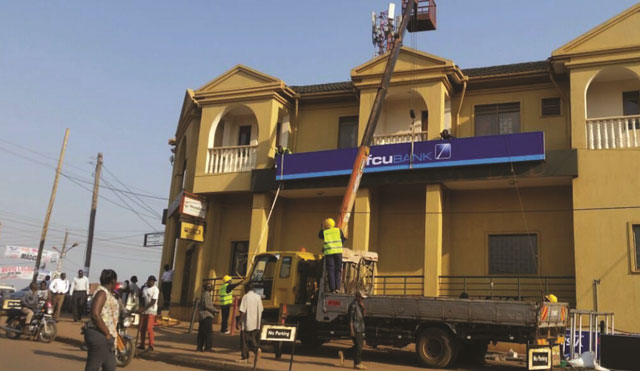
DFCU DEAL: Taxpayer stands to lose Shs300bn
Kampala, Uganda | HAGGAI MATSIKO | When Juma Kisaame; the Managing Director of DFCU Bank, looks at its latest financial results, he might have reason to smile and to worry. The bank’s latest financial results have excited shareholders but are also attracting major scrutiny since the bank’s gobbled one of Uganda’s top banks; Crane Bank Ltd, in a controversial acquisition.
Now, it appears, the acquired Crane Bank assets are contributing the lion’s share of DFCU’s profits and its headache.
Indeed, as DFCU announced hundreds of billions in profits, Parliament’s Committee on Statutory Authorities and Enterprises (COSASE) for the second time directed the Auditor General to conduct a forensic audit into the agreement entered between DFCU and Bank of Uganda (BoU) over the sale of Crane Bank assets.
Amongst the things the AG has been asked to audit are the funds the central bank injected into Crane Bank before selling it to DFCU.
These fresh calls for investigation follow another report by the AG, which indicated that the central bank’s capital injection into Crane Bank eroded BoU’s capital and left it Shs37 billion below the statutory minimum capital requirement as at June 30, 2017; six months after DFCU acquired Crane Bank.
From October 2016 to June 2017, the AG notes, BoU injected Shs.473bn into Crane Bank as intervention costs.
In January 2017, BoU sold specific assets and liabilities of at Shs 200 billion to DFCU.
The AG noted that BoU performed an impairment assessment of the intervention costs injected in Crane Bank and concluded that the amount due from DFCU Bank was not impaired.
The AG wrote that BoU’s capital was eroded, however, because of its provision for impairment of a mind boggling Shs197billion, whose recoverability was uncertain.
In financial terms, such a provision for impairment as BoU undertook regarding money from Crane Bank Ltd means that it is permanently lost. In other words, the taxpayer stands to lose this money.
“I considered this issue to be a key audit matter as noncompliance with the minimum capital requirement may result in inadequate capital which poses a business risk to the Bank and its operations,” the AG wrote.
The uncertainty is because the money is a subject of the on-going court battles in which both the central bank and former Crane Bank proprietor Sudhir Ruparelia have sued each over the closure and eventual sale of what until 2016, Uganda’s fourth largest bank before it was sold to DFCU.
DFCU profits rise
Within just months of taking over the assets of Crane Bank last year, DFCU reported a profit of Shs115 billion up from a paltry Shs31 billion the previous year.
A year later, in its latest financial results approved by the central bank on March 27, DFCU has announced a net profit of Shs127 billion.
The bank’s income has also doubled over the period to Shs517.3 billion from Shs257.3 billion the previous year. The previous year, the bank’s income grew from Shs222.9 billion to Shs 257.3 billion.
Apart from income, assets have jumped from Shs1.8 trillion in 2016 to Shs3 trillion in 2017, and property and equipment from Shs67.1 billion to Shs142.6 billion.
DFCU’s financials have attracted a lot of attention because they come hardly a month after an erstwhile tightly guarded agreement it entered into with the central bank to acquire Crane Bank leaked as part of a major fall-out of principals at the central bank.
The agreement, which The Independent has obtained, had remained under the lock and key of Justine Bagyenda, the former Executive Banking Supervision.
Not even the former shareholders of Crane Bank had been able to access it.
But it leaked once BoU Governor Tumusiime Mutebile, fell out with her and fired her early February, sparking off a major battle at the central bank that has sucked in the Inspector General of Government— who is looking to block Bagyenda’s firing alongside the transfer of some 54 staff at the bank. The agreement leaked together with other documents that have shone a spotlight, among others, on the nature of the deal BoU entered with DFCU.
Following the leakage, many are questioning how the central bank could have sold a bank valued at Shs. 1.3trillion at a paltry Shs 200 billion.
Matters are not helped by the fact that DFCU did not pay cash for the bank. Rather, it entered an agreement that would see it pay over ten quarterly installments over a period of two and a half years interest free, according to the Auditor General’s recent audit of BoU.
As security, DFCU used treasury bonds it had bought from BoU.
Going by this, given that DFCU made a profit of Shs 127 billion in just a year of acquiring the bank, observers say, it might as well have paid that and remained with a balance of Shs50 billion.
 The Independent Uganda: You get the Truth we Pay the Price
The Independent Uganda: You get the Truth we Pay the Price



